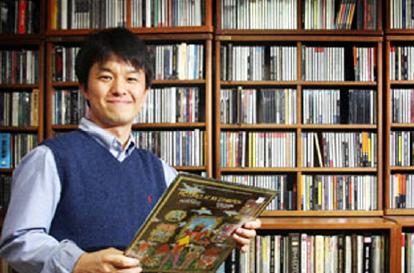
If you love the arts, you can make a career supporting them even if you are not an artist. Here is the field that Art and Culture meet management. Arts management programs, which can be learned in universities or postgraduate schools, prepare students for working with artists and art institutions, such as museums and dance companies, to promote art, raise funds and manage finances, and develop programs. You’ll get a strong foundation in business and economics, and learn about what special issues and challenges the art world faces today. According to the books, ‘Culture, Meets Management,’ the defining of Art management is a little difficult because it is only 30 years that art combine with management and new concept about it come out of the world. Also, actually the attribute of ‘Arts’ and ‘Management’ as a substantial study make it difficult to embody new compound fields ‘Art management.’ Art management means all of acts that help to convey artist (individual or group) and art works to the consumers more widely and positively. Now, to understand and get knowledge of art management, the Sookmyung Times had an interview with Young Ho Seong who is the director of Arts Management in the Ministry of Culture, Sports and Tourism.
Standing room only: Strategies for marketing the performing arts (Gimmyungsa)
ㅇHow do you define Art and Culture Management ?
It can be said in two ways. First of all, to the letter, it is a study in managing the arts. Here, the field of ‘Art’ includes visual and performing arts such as music, drama, dance, musicals, and broadly, also literature and the contents industry which has been standing out recently. And in the field of ‘management,’ static areas (organization, human resources, finance), planning of art programs, marketing, and financial assistance were all included in Art and Culture Management in former days. If you link these two explanations, you can infer what Art and Culture Management is. Personally, I define Art and Culture Management as ‘Intermediate activity with art as the central figure. Intermediation has two points. One is mediating the demand and supply of arts. That is, this helps convey various art products produced by artists or art groups to the public which consumes the arts. The other is connecting the dreams and passion that artists have with reality. Artists do not dream on the assumption of realistic restriction. Art and Culture Management help them to realize what they dream of by becoming a strong support for artists who do not step on reality.
ㅇ What is the difference between art management and business management?
It can be explained by the difference in treating an object as art or not art. In addition, in most artistic activities, persistent reproduction is difficult with the mere income generated by selling tickets, so most art groups are considerably dependent on grant money from enterprises, and the private and public sectors by being active as non-profit organizations. Of course, among these artistic groups, we have the example of the musical which is dependent on its own income and the construction of market places on the interface between art management and business management.
ㅇ What field of study is most related to art management?
The most closely related study is business administration. If you ascend the learning ladder, you can discover art management which deals with art in terms of administration. However, in the mid-1960s, after the arrival of contemporary art management, art management developed its own logic, so now, it is building its own body of theory which is different from general business management.
ㅇ If art is a difficult field which has to make economic profits by itself, what is the government’s policy with regards to supporting creative activities?
The government’s policy can be explained by comparing it to a computer, thus divided into hardware, software, and contents. The hardware policy is making spaces where stadiums, museums and art galleries can exist. For example, it aims to establish cultural spaces like the Seoul Arts Center, Chumgmu Art hall and the National Museum of Contemporary Art. More broadly, media such as books, broadcasting, and the Internet are also included. Second, the software policy means forming the system of administration and promoting specialists who use the system in order to make the best use of the software. Fostering the art group’s development through consulting or developing human resources is an example of this work. Third, the contents policy is that which helps artists and art groups to create and publish various contents. The government grants about 90 billion Won a year through the Arts Council Korea. This is the contents policy.
ㅇ Business views cultural enterprise in terms of giving back to society. Is it same with Art management?
Seemingly, they show the same features and in the area of art management, both of them are important activities. Actually, in considerable sections, they often overlap. However, if we look at the structure, art is the principal part of art management. On the contrary, public relations are the fundamental purpose of cultural enterprise.


